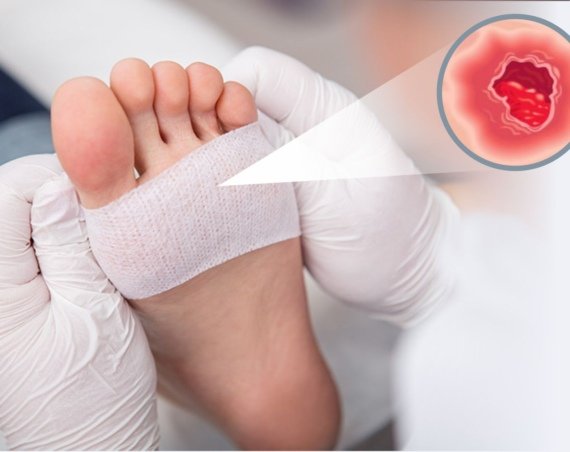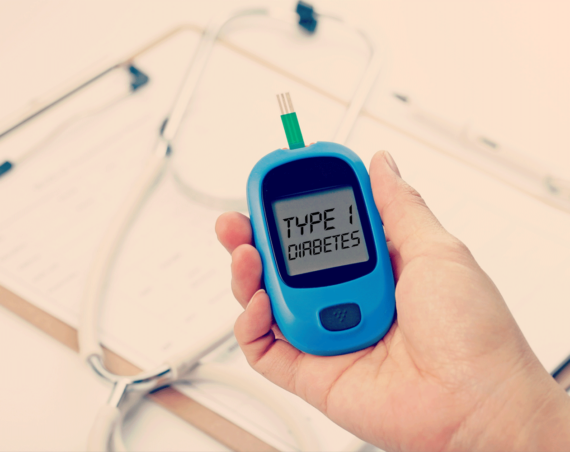Introduction
India has an estimated 77 million diabetics, making it the world’s second-largest diabetic population behind China. One in every six individuals (17%) in India has diabetes. Moreover, more than 75 percent of the young Indians are at risk of diabetes.
The prevalence of Type 1 diabetes is more in Western nations when compared to India. In India, only about a third of type 2 diabetics are overweight or obese. According to research in 2004, the high incidence of type 2 diabetes among Indians attributes to the environmental and lifestyle changes brought about by industrialization and migration from rural to urban areas. According to International Diabetes Federation, the prevalence of diabetes in the Indian population is 8.9 percent. According to 2016 WHO report, the prevalence of diabetes in India was 7.8 percent ( 7.9 percent male and 7.5 percent female).
In India, the number of diabetics has risen from 26 million in 1990 to 65 million in 2016. The 2019 National Diabetes and Diabetic Retinopathy Survey report by the Ministry of Health and Family Welfare showed the prevalence of diabetes and diabetic retinopathy was determined to be 11.8 percent among the geriatric population whose ages were greater than 50 years. The 2020 annual report published by the Ministry of Health and Welfare GOI mentions the NCD screening of diabetes patients carried out by the National Programme For Prevention And Control Of Cancer, Diabetes, Cardiovascular Diseases And Stroke since 2014 ( See Figure 1). The data shows that every year more than 5 lakh people in India are diagnosed with diabetes.
Thus, diabetes prevention programs are the need of the hour in developing countries due to the high cost of treatment for diabetes. For example, a person with diabetes in India is expected to spend a median of 10,000 rupees (US$140) on medical treatment. Therefore, India needs practical, cost-effective diabetic primary prevention methods through effective Information technology and medical science studies.
Prevention of diabetes
Because of the tremendous expense of treating diabetes and its consequences, preventing diabetes is extremely important for any country, particularly in under-developed and developing countries. For example, a person with diabetes in India, on estimation, spends a median of Rs. 10,000 per year on medical treatment.
The necessity of the hour is to establish practical, cost-effective primary preventive measures that will benefit the whole population. Recent research employing information technology, such as mobile phone-based SMS, is being explored for this aim.
On a national and personal level, we can take few measures to improve the situations of diabetes in India-:
- National Level undertaking
- Diabetes Prevention Program in India
The Indian Diabetes Prevention Program was a three-year randomized control experiment in which LSM and metformin (Met) was used to prevent type 2 diabetes in people with IGT. According to the study, LSM and Met were cost-effective treatments for avoiding diabetes in high-risk patients in India and other developing countries.
- Diabetes Prevention and Control Program (NDCP)
The National Diabetes Control Program launched in Tamil Nadu, Jammu & Kashmir, and the Karnataka regions in 1987, have the following goals:
- Identify and Create awareness about the risk factors of diabetes
- Introduction of Health education with the goal of early intervention.
- Aiming for early detection and treatment of those who are afflicted
- Approaches to reduce morbidity and mortality in high-risk populations.
- Preventing the complications of diabetes like acute and chronic metabolic, cardiovascular, renal, and ocular problems
- Rehabilitation of those who were disabled as a result of the disease
- Creating awareness among people
- National Programme For Prevention And Control Of Cancer, Diabetes, Cardiovascular Diseases And Stroke (NPCDCS) by GOI
Launched in 2008, the objectives of NPCDCS for diabetes prevention include:
- Promoting health education
- Carry out opportunistic screening to detect diabetes in the early stage among people with high-risk factors.
- Capacity building of healthcare systems at all levels to improve the quality of care and tackle non-communicable diseases.
- Reduce mortality due to diabetes
- Government and healthcare campaigns
- Accessibility of services to everyone and everywhere
- Making drugs cheaper and educating common people about the dos and don’ts.
- Enhancing quality of healthcare
- Expanding research sector
- Identifying risk factors and taking steps to early diagnosis of the disease.
- On a personal healthcare level
- Regular exercise, daily morning walk, yoga, running, aerobics are a few of the recommendations made by research scientists and doctors that they believe can help prevent diabetes.
- By consuming healthy food and making healthy food alternatives: Select foods with lower fat, saturated fat, calories, and salt. Always eat and buy fresh vegetables and fresh fruits. Stop consuming soft drinks and replace them with fresh juices and water.
- Stop eating deep-fried foods, sugar-loaded food items, and smoking cigarettes.
- Plan your meals with a nutritionist and try to shift to a healthy food regimen. Schedule your meals and snacks at regular times throughout the day.
- Eat slowly, chew properly, and drink ample water to keep the metabolism process inside the body working.
- Try walking as much as possible and use stairs instead of lifts.
Conclusion
Apart from being confined to Indian diabetes care guidelines, there is a clear need for a comprehensive diabetic care program that is more thorough. Essential diabetes care should be widely available to the general public in terms of technology and knowledge, as stated above, and acceptable to them at a reasonable cost. To minimize diabetes-related morbidity and death in India, coordinated efforts by diabetes consultants, family doctors, people with diabetes, the general public, relevant associations, and those in charge of public health are required. A balanced approach to improving diabetes knowledge and control among patients and the medical fraternity is the urgent need of the hour, given the gaps between recommendations and real-life practice, and to enhance diabetes control in India. The best product and service design applicability for patient-centered diabetes care could be assessed for the Indian subcontinent, and diabetic patients’ knowledge levels could be increased to include them in their treatment plans.
REFERENCES
- Kumar, A., Goel, M. K., Jain, R. B., Khanna, P., & Chaudhary, V. (2013). India towards diabetes control: Key issues. The Australasian medical journal, 6(10), 524–531. https://doi.org/10.4066/AMJ.2013.1791
- Ramachandran, A., & Snehalatha, C. (2014). Prevention of diabetes: How far have we gone?. Indian journal of endocrinology and metabolism, 18(3), 252–253. https://doi.org/10.4103/2230-8210.131112
- Verma, R., Khanna, P., & Mehta, B. (2012). National programme on prevention and control of diabetes in India: Need to focus. The Australasian medical journal, 5(6), 310–315. https://doi.org/10.4066/AMJ.2012.1340
- Diabetes in India. Accessed at
https://www.diabetes.co.uk/global-diabetes/diabetes-in-india.html - Diabetes report of India by WHO. Accessed at https://www.who.int/diabetes/country-profiles/ind_en.pdf?ua=1
- 2020-2021 Annual Report, Department of Health and Family Welfare, Ministry of Health and Family Welfare, Government of India, Accessed at
https://main.mohfw.gov.in/sites/default/files/Annual%20Report%202020-21%20English.pdf





